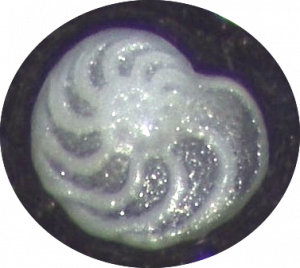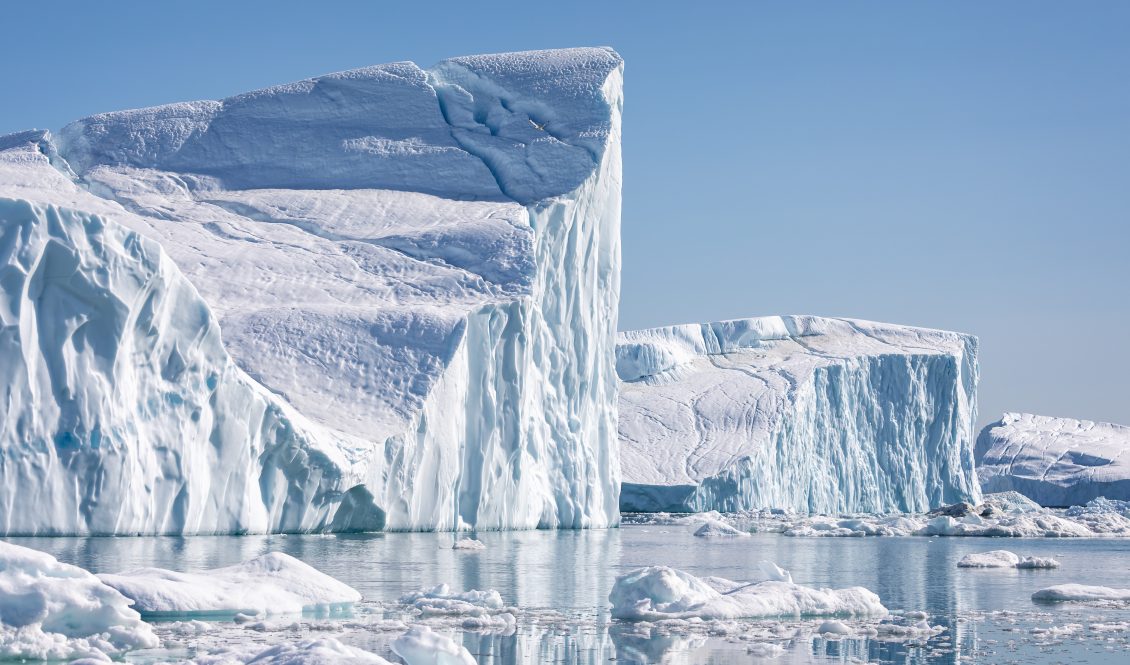What leads to lower atmospheric CO2 during ice ages is a question that has puzzled scientists for decades, and it is one that UConn Department of Marine Sciences Ph.D. student Monica Garity and coauthors are working to understand. By looking at patterns of carbon storage in the deep ocean, the researchers shed new light on this decades-old question. Their results are published in The Proceedings of the National Academy of Sciences (PNAS).
The ocean is central to Earth’s carbon balance, acting as both a sink and source of carbon for the atmosphere. To better understand the role of the ocean in past atmospheric CO2 changes, the researchers looked back 150,000 years and tracked ocean carbon storage trends as large continental ice sheets advanced and retreated over the course of the last two ice ages. Garity explains that much of the existing research on the ice ages focuses on the end portion, called termination, rather than the processes causing ice to build up at the beginning, called inception.
“One of the main things we’re looking at is if there is a consistent set of feedbacks that occurs during glacial inception and termination,” says Garity. “We know that there are probably several different feedbacks working in tandem to achieve the lower atmospheric CO2 that we see during ice ages, but identifying these mechanisms is challenging.”

The researchers looked at sediment cores taken from deep in the Atlantic Ocean, in an area called the Brazil Margin. Garity explains that these cores were taken in the 1990s, and they have been dated so the researchers can simply take scoops from the parts of the cores that correspond to the timeframe in question. Within the sediment are the shells of tiny protists called foraminifera which record the chemistry of the ocean at the time they were alive. They analyzed the foraminifera for stable isotopes and metal ratios, including boron and calcium. The ratio of boron to calcium in the foraminifera can be used to reconstruct past carbonate ion concentration in the ocean which is inversely related to the carbon content.
A large quantity of the tiny shells was needed to make the measurements, says Garity, especially for samples from the deepest cores, where there are fewer microfossils. To do this, the researchers first freeze-dry the samples and then wash the sediment over very fine sieves.
“It’s a lot of standing over the sink washing the mud out, and then we have all of these tiny foraminifera left in the sieve. We look under the microscope and pick a very specific kind out of the many different species present in each mud sample. The species we use is a very reliable recorder of the past ocean chemistry and is the best for the type of analysis we are doing,” says Garity.
This method is a fascinating way to look into the past and see ocean acidification in action. When ocean carbon storage increases the water becomes more acidic and the foraminifera can dissolve, says Garity.
“It is pretty cool when you’re washing samples, and you can tell what interval you’re going through as the foraminifera get more and more sparse.”
The researchers saw carbonate ion decline in the deepest Atlantic 115,000 years ago during the initial drop in atmospheric pCO2, indicating there was increased carbon storage during the early stages of glacial inception. Garity says this was an exciting find.
“In this paper, we show that the deep Atlantic is tied to atmospheric CO2 trends, where we see a decline in atmospheric CO2 and a buildup of carbon in the Atlantic during each stage of glacial inception. Then, during terminations, when atmospheric CO2 increases, we see a release from the Atlantic,” says Garity. “This is the first time that we’re showing that there’s increased carbon storage in the Southern Ocean sourced waters during glacial inception.”

Garity points out that this work has obvious implications for today’s changing climate. More carbon in the atmosphere means more carbon entering the ocean, but the processes happening today are occurring on an accelerated time scale relative to those of the past.
Future directions for this project include creating more records at different locations throughout the ocean, says Garity.
“It would be great if we could get another southern source water B/Ca record for glacial inception, because having one is great, but we want to try to verify that the same trend is happening in other Atlantic locations.”
Garity says the help from co-authors and NSF Research Experience for Undergraduate (REU) students Hope Jerris and Jacquelyn McBride helped make this work happen. Garity will soon be finishing her PhD, and Jerris is hoping to continue similar work in a Ph.D.
“The more we can understand climate in the past, the more we can try to understand how climate will change in the future,” says Garity. “This is just another puzzle piece to figuring out the decades-long mystery of the ice ages.”



